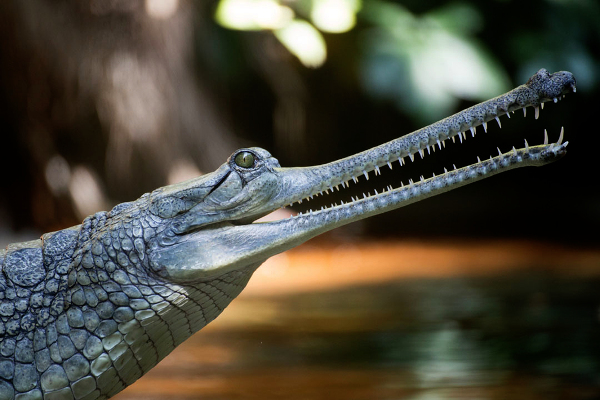CHANDIGARH: The long Covid-19 lockdown has come as a boon to critically-endangered long-snouted gharials – a species of crocodile highly sensitive to pollution – thanks to improved water quality due to reduced human activity and industrial pollution in Punjab.
With clean, fast flowing river full of fish, the lockdown has turned the Beas Conservation Reserve – a 185-km stretch of the Beas River- into a perfect habitat for the gharials, which were re-introduced in the river over two years ago.
The water quality of the Beas has considerably improved in the last 45 days and the Punjab Pollution Control Board (PPCB) has removed the river from polluted category after a recent survey.
Ground reports shared by the teams of wildlife department and ‘Beas Mitars’- a network of riparian communities along the Beas Conservation Reserve – revealed that prey intake of the gharials has increased due to availability of aquatic life like fish in abundance. They have been spotted spending most of their time in water and eating fish.
This has emerged as a heartening sign for the wildlife experts as the prey base of the gharials had fallen drastically after the molasses leak incident in 2018, which had led to mass mortality of numerous species of fish. After the incident, the gharial prey base had come down to 55-20 kg per day from 140-150 kg per day. The experts are hopeful that the prevailing circumstances will help in fast replenishment of their prey base.
The gharials are being regularly spotted basking on the mid-channel islands in the Beas Conservation Reserve. On an average, about 25 gharials have been spotted per sighting at different locations of the reserve. They have also been spotted co-existing with the cattle.
Encouraged by the ground reports, the wildlife department has decided to release more gharial hatchlings in winter.
Dr Kuldip Kumar Lomis, principal chief conservator of forests, wildlife and chief wildlife warden of Punjab, maintained that the gharials are doing well in the Beas Conservation Reserve and are being regularly monitored. Beas Mitars and teams of the department have helped in gathering river-related information and quick field action amidst Covid-19 related restrictions in the state, he said. “We are planning to augment staff strength and infrastructure for the Beas Conservation Reserve along with regular patrolling and enforcement,” said Dr Lomis.
Dr Gitanjali Kanwar, coordinator, WWF-India, said the improvement in health of the Beas River is a blessing and will surely benefit the gharials, a species highly sensitive to pollution. “A detailed survey of the gharials will be done once lockdown restrictions are lifted by the government,” said Dr Kanwar.
Source: TNN
Image Courtesy: Critterfacts
You may also like
-
New Heat-Based Approach To Cancer Treatment Can Reduce Chemotherapy Doses
-
Scientists Take A Major Step Towards Unification Of Classical & Quantum Gravity
-
India Graphene Engineering and Innovation Centre (IGEIC) Under the Vision of Viksit Bharat@2047 Launched
-
New High-Performance Gas Sensor can Monitor Low Level Nitrogen Oxides Pollution
-
Antidepressant Drug can be Repurposed for Treating Breast Cancer
